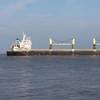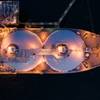McMurdo Selected for Africa’s MEOSAR SAR System
McMurdo, the most trusted name in emergency readiness and response and a division of Orolia (NYSE Alternext Paris – FR0010501015 – ALORO), has been selected by a leading Northern Africa search and rescue (SAR) authority to deploy their next-generation MEOSAR (Medium Earth Orbit Search and Rescue) satellite-aided SAR system. The contract is valued at over €4M (US$4.5M) with a performance period of 16 months.
The MEOSAR system, which is the first of its kind in Africa, will include satellite ground stations and mission control and rescue coordination centers. It will also include McMurdo’s new Reference Beacon, which will provide ground system operators with configuration tools, advanced simulation capabilities and multiple distress beacon transmission options to enhance system performance testing. MEOSAR is the next-generation version of the Cospas-Sarsat international search and rescue satellite system that has helped to save over 37,000 lives since 1982.
“McMurdo continues to strengthen its position as the world’s leading provider of MEOSAR systems that are shaping the future of the search and rescue industry,” said Jean-Yves Courtois, CEO of McMurdo’s parent company Orolia. “As we have done with our existing MEOSAR customers in Europe, North America, South America, Asia and now Africa, we will work closely with the search and rescue authorities to ensure that they have the latest technology, training and support in place to, ultimately, save more lives,” he added.
In a typical Cospas-Sarsat satellite-based search and rescue scenario, ships, aircraft or individuals transmit distress signals from an emergency location beacon via satellite to a fixed ground receiving station or local user terminal. The ground station receives and calculates the location of the distress signal and creates and sends an alert to the appropriate rescue authorities. Today, the beacon-to-alert process may take several hours before a position is confirmed. With MEOSAR, beacon signals will be received near instantaneously and beacon locations identified with greater accuracy thereby considerably reducing rescue times.












